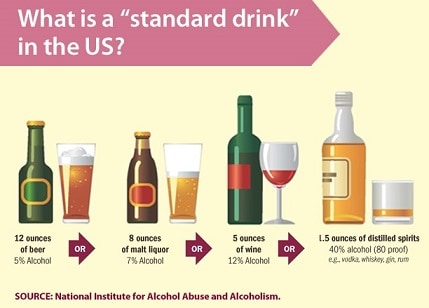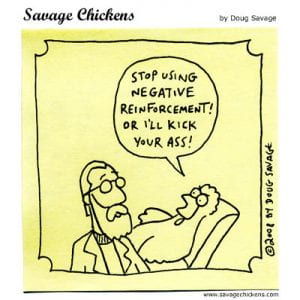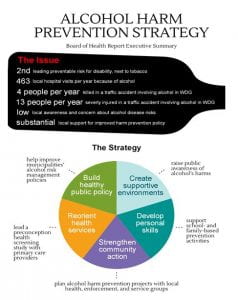Have you ever wondered what the differences in alcohol dependence and depression were among Non-Hispanic black women compared to Non-Hispanic white women?
Well have no fear, Quonesha is here (to inform you)!

Depression and alcohol use disorder affects many Americans nationwide. Evidence suggests that depression and alcoholism are closely associated as there are at least 30-40% of those with alcohol dependence that experience some type of depressive disorder (Hobden, Bryant, Sanson-Fisher, Oldmeadow, Carey 2018); however, there is conflicting evidence that suggests whether depression causes alcohol dependence or if alcohol dependence is the cause of depression (Boden & Fergusson 2011).
Although the prevalence of alcohol dependence affects many racial groups, Non-Hispanic black women are known to be less likely than persons of other racial groups, such as Non-Hispanic whites, to use and abuse alcohol. In contrast, the prevalence of depression is higher among Non-Hispanic black women (9.2%) compared to Non-Hispanic white women (7.9%) (Klein, Sterk, Elfison, 2016 & Caetano, Baruah, Chartier, 2011).

For a further look into previous research studies, I decided to take it upon myself to conduct my own study that examined the differences in heavy alcohol consumption and depression among Non-Hispanic black women compared to Non-Hispanic white women.
To conduct this study, I used data from 2015-2016 National Health and Nutrition Examination Survey (NHANES) to examine the differences in heavy alcohol consumption and depression among Non-Hispanic black women compared to Non-Hispanic white women residing in the United States. There were 971 (32.6%) Hispanic women, 651 (21.8%) Non-Hispanic black women, 910 (30.6%) Non-Hispanic white women, and 444 (15%) women of other racial groups present in this research study; however, Non-Hispanic black women and Non-Hispanic white women where used for this study.
Heavy alcohol consumption was measured by women that consumed more than eight drinks per week or more than three drinks per occasion, and mental health status was measured using a depression screening that asked participants a series of questions regarding depression. To analyze the data, i decided to perform Chi-square tests of independence and logistic regressions to predict the relationship between the independent variable, race, and the dependent variables, heavy alcohol consumption and depression.

There were significant differences among Non-Hispanic black women compared to Non-Hispanic white women, regarding heavy alcohol consumption (p-value: 0.002). However, there were no significant differences among Non-Hispanic black women compared to Non-Hispanic white women, regarding depression (p-value: 0.288) and depression and heavy alcohol consumption (p-value: 0.242).
Additionally, the logistic regression analysis found that there were significant differences between the two groups regarding heavy alcohol consumption (p-value: 0.007, O.R: 1.51, 95% C.I: 1.13, 1.99). However, there were no significant differences among the two groups regarding depression (p-value: 0.259, O.R: 1.16, 95% C.I: 0.88, 1.55) and depression and heavy alcohol consumption (p-value: 0.271, O.R: 1.34, 95% C.I: 0.77, 2.32).
| |
Depressed* |
Heavy alcohol consumption* |
*Depressed and heavy alcohol consumption |
| |
**N (%) |
P-value |
Odds Ratio
(95% CI) |
**N (%) |
P-value |
Odds Ratio (95% CI) |
**N (%) |
P-value |
Odds Ratio
(95% CI) |
| Total |
370 (25.9) |
N/A |
N/A
|
381 (35.4) |
N/A |
N/A
|
134 (34.8) |
N/A |
N/A
|
| †Race/ Ethnicity
Non-Hispanic Black women
Non-Hispanic White women |
132 (3.6)
238 (22.2) |
0.288 |
1.00 (ref)
1.16 (0.88,1.55) |
120 (3.9)
261 (31.5) |
0.002¢ |
1.00 (ref)
1.51 (1.13,1.99) |
43 (4.0)
91 (30.8) |
0.242 |
1.00 (ref)
1.34
(0.77, 2.32) |
| |
|
|
|
The results from this study both contradict and support previous studies. The analyzed data indicates that there were significant differences among Non-Hispanic black women compared to Non-Hispanic white women regarding heavy alcohol consumption, which supports previous studies. However, there were no significant differences among Non-Hispanic black women compared to Non-Hispanic white women regarding depression and depression and heavy alcohol consumption, which contradicts previous studies. Additional research is clearly needed to better understand the etiology and patterns of alcohol use and depression among women across and within racial and ethnic groups.
I also think that a better understanding of the underlying causes of alcoholism and depression among the two groups will inform public health officials to develop effective prevention programs and interventions that are specifically targeted towards each group (Withbrodt, Mulia, Zemore, Kerr 2014 & Assari 2014). Affordable alcohol rehabilitation centers that provide mental health services with certified clinicians should be placed in areas with increased rates of alcohol abuse and depressive disorders to make certain that every individual, regardless of race, can receive the same treatment.
.
https://www.alcohol.org/women/
https://www.alcoholrehabguide.org/resources/dual-diagnosis/alcohol-and-depression/
Assari S. (2014). Separate and Combined Effects of Anxiety, Depression and Problem Drinking on Subjective Health among Black, Hispanic and Non-Hispanic White Men. International journal of preventive medicine, 5(3), 269–279.
Boden, J. M., & Fergusson, D. M. (2011). Alcohol and depression. Addiction, 106(5), 906- 914.
Caetano, R., Baruah, J., & Chartier, K. G. (2011). Ten-Year Trends (1992 to 2002) in Sociodemographic Predictors and Indicators of Alcohol Abuse and Dependence Among Whites, Blacks, and Hispanics in the United States. Alcoholism: Clinical and Experimental Research.
Hobden, B., Bryant, J., Sanson-Fisher, R., Oldmeadow, C., & Carey, M. (2018). Co-occurring depression and alcohol misuse is under-identified in general practice: A cross-sectional study. Journal of Health Psychology, 23(8), 1085–1095.
Klein, H., Sterk, C. E., & Elifson, K. W. (2016). The Prevalence of and Factors Associated with Alcohol-Related Problems in a Community Sample of African American Women. Journal of Addiction, 2016, 1-11.
Witbrodt, J., Mulia, N., Zemore, S. E., & Kerr, W. C. (2014). Racial/Ethnic Disparities in Alcohol-Related Problems: Differences by Gender and Level of Heavy Drinking. Alcoholism: Clinical and Experimental Research,38 (6), 1662-1670.






















